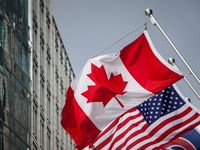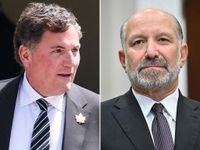Canada’s trade relationship with the United States is entering a new and potentially less confrontational chapter, as Canadian Trade Minister Dominic LeBlanc heads to Washington, D.C. this week for high-stakes talks with U.S. Commerce Secretary Howard Lutnick. The meeting, scheduled for Tuesday, August 26, 2025, comes on the heels of a major policy shift by Prime Minister Mark Carney’s government: the removal of a swath of retaliatory tariffs on American goods—a move designed to mirror recent U.S. tariff exemptions under the Canada-United States-Mexico Agreement, or CUSMA.
Announced last Friday, August 22, the Carney government’s decision to drop 25% counter-tariffs on a long list of U.S. products marks a significant turning point in a trade dispute that has simmered for months. According to CTV News, the affected goods range from fresh produce and orange juice to bourbon, motorcycles, and other classic American items—many of which had been chosen to apply pressure on key U.S. political constituencies. The new exemptions will take effect on September 1, 2025, but crucially, Canada’s tariffs on steel, aluminum, and automobiles will remain in place, at least for now.
Prime Minister Carney explained the rationale behind the move, stating that Canada would match American tariff exemptions for goods covered under CUSMA. "We are seeing great challenges and difficulties for key industries such as the automotive industry, copper, steel, and Mr. LeBlanc and our team are going to focus on these strategic sectors and we see the opportunity to forge a strategic agreement with the U.S.," Carney said during a visit to Germany, as reported by Brunswick News. He emphasized that the shift in strategy is aimed at securing immediate relief for sectors hit hardest by U.S. tariffs, while preserving the broader benefits of the existing free trade pact.
The decision has not been without controversy at home. Conservative Leader Pierre Poilievre described the move as Carney’s "capitulation and climbdown," suggesting the government had blinked first in the standoff. Meanwhile, the Canadian Federation of Independent Business called it "a step in the right direction," reflecting a more pragmatic view that easing the tariff burden could help Canadian businesses recover from months of uncertainty and higher costs. The Canadian Federation of Independent Grocers also welcomed the news, noting that with 80% of Canada’s fruit and vegetables imported from the U.S., price reductions should soon be visible in produce aisles across the country.
But don’t expect prices to plummet overnight. Food economist Mike von Massow of the University of Guelph told CTV News that "prices will not come down immediately, but they will come down. We're not talking months, we're probably talking weeks." He explained that perishable products like fresh orange juice would likely see quicker price adjustments due to frequent shipments, while shelf-stable goods would take longer to reflect the new reality. Loblaws, Canada’s largest grocery retailer, confirmed that as soon as inventories purchased under higher tariffs are sold, consumers will start to see lower prices in stores.
For LeBlanc, the upcoming meeting with Lutnick is the latest in a series of intense negotiations. He’s been in "constant communication" with his American counterpart, having met several times in Washington before President Donald Trump’s August 1 deadline for a new trade deal. According to Global News, LeBlanc has described the now-lifted retaliatory tariffs as a "significant point of contention" in the talks, noting that only Canada and China had chosen to retaliate against the U.S. with tariffs of their own.
The stakes are high. Earlier this month, the Trump administration ratcheted up tariffs on certain Canadian exports from 25% to 35%—though these higher duties do not apply to goods compliant with CUSMA. The White House has cited both the ongoing flow of fentanyl and Canada’s own retaliatory tariffs as reasons for the increased levies. In a statement last Friday, President Trump called Canada’s decision to lift some duties "nice," adding, "He’s removing his retaliatory tariffs which I thought was nice, and we’re going to have another call soon. Ya, we had a very good call. I like him." The White House echoed this sentiment, describing the move as "long overdue."
Still, Trump has shown little willingness to roll back sector-specific tariffs or broader duties, even as countries reach agreements. In remarks on Monday, August 25, he boasted that America is "the most respected we have ever been" due to the revenue generated from tariffs, and insisted his global tariff strategy is "bringing back business to the United States." Yet, he also signaled openness to a deal with Canada, saying, "We are working on something, we want to be very good to Canada."
For Canadian industries reliant on U.S. markets, the pain has been acute. The U.S. Department of Commerce recently doubled countervailing duties on Canadian softwood lumber to 14.63%, with anti-dumping duties now totaling 35.19%. The New Brunswick Lumber Producers, representing nearly all of the province’s softwood sector, said they are "deeply troubled" by the move, warning of serious consequences for jobs and communities.
LeBlanc’s mission in Washington is twofold: to seek sectoral relief for industries like automotive, copper, steel, and lumber, and to lay the groundwork for a broader renegotiation of the continental trade pact. With initial talks on a CUSMA review expected to begin in the coming months, both sides appear to be jockeying for leverage. According to Postmedia, the Carney government’s shift in tactics reflects an effort to "stick handle" through a complex game—moving from confrontation to negotiation. As Carney himself put it, "There is a time in a game, in a big game and this is a big game, when you go hard in the corners, you go elbows up. There’s a time in a game where you drop the gloves in the first period to send a message, and we’ve done that, pretty uniquely in the world. But there’s also a time in the game where you want the puck, you want to stick handle, you want to pass, you want to put the puck in the net, and we’re moving later into the game. We’re at that time in the game."
LeBlanc echoed this cautious approach, stating, "Canadians expect us to take the time necessary to get the best deal we can in the interest of Canadian workers, so we’re only going to be in a position to accept the deal when the prime minister decides that it’s the best deal we can get." Canada’s ambassador to the U.S., Kirsten Hillman, agreed: "There is a time when the deal is the right deal, and it’s important for us to be in a position to continue negotiating until we get to that point."
As the dust settles on the latest round of tariff maneuvers, the focus now turns to Washington, where LeBlanc and Lutnick will try to chart a path forward. For Canadian consumers, the promise of lower grocery bills is on the horizon. For Canadian industries, the hope is that this new phase of engagement will bring not just relief but stability in a trade relationship that remains, for now, as unpredictable as ever.


